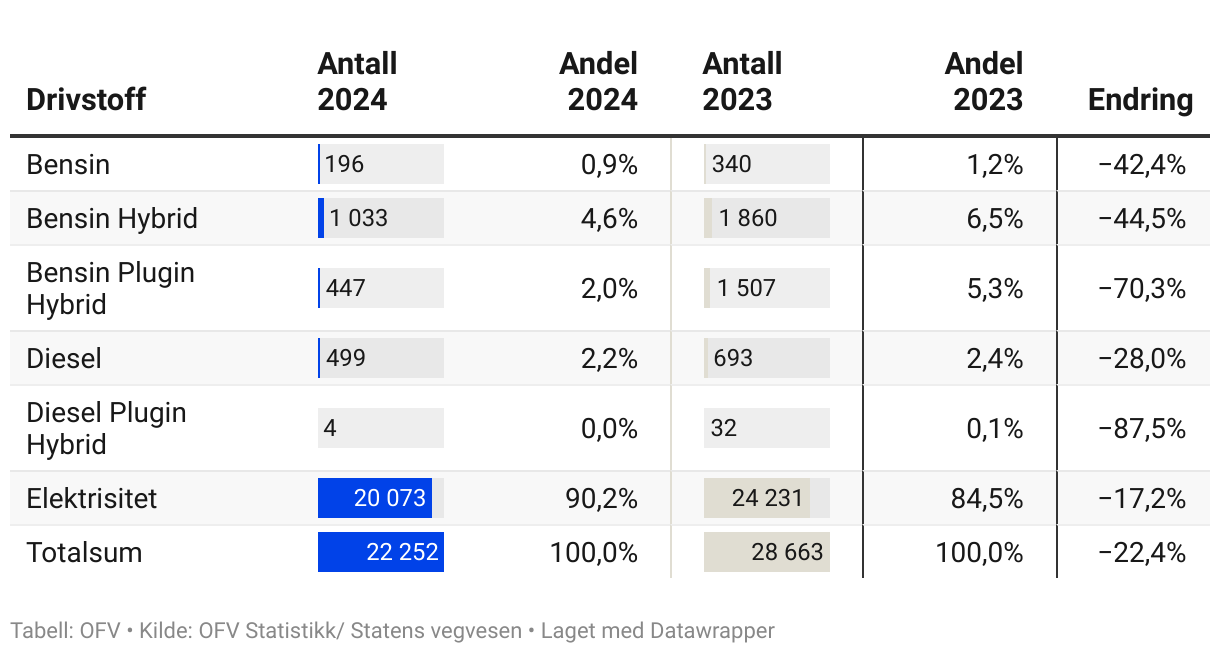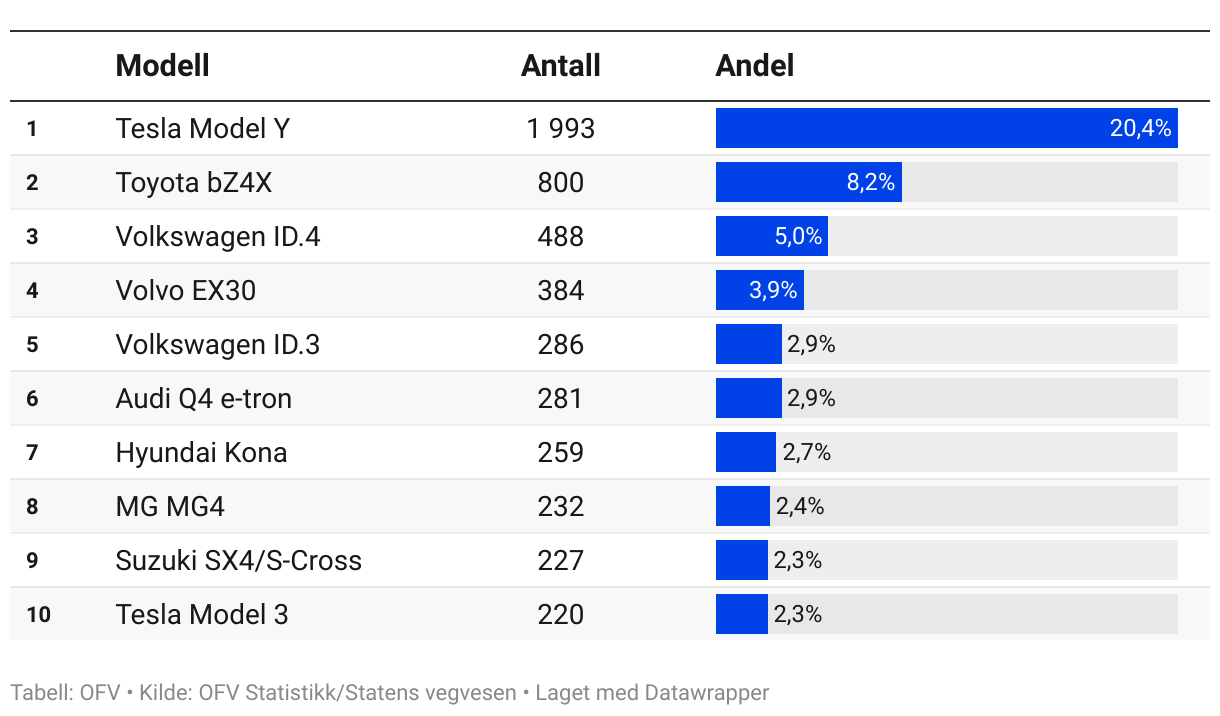
The electric vehicle (EV) landscape in Norway continues to set records, with March witnessing plug-in EVs achieve a 91.5% market share, a marginal increase from 91.1% the previous year. The impressive figures are dominated by battery electric vehicles (BEVs), which alone accounted for almost 90% of the share. However, overall automotive volumes have seen a 50% decrease year-over-year, marking the lowest March sales in fifteen years.

The most popular vehicle in Norway for the month was the Tesla Model Y, maintaining its leading position for the eighth consecutive month. This comes amid an observable shift in policy that has begun steering consumers from plug-in hybrids (PHEVs) to fully electric models. PHEVs, which previously averaged a 7% share throughout 2023, experienced a temporary surge to 16% in December 2023, just before the policy changes took effect. Subsequently, their share has seen a decline, averaging 2% in the first quarter of 2024.
In contrast, BEV shares have increased to fill this gap, rising from an average of 83% throughout 2023 to 90.2% in the first quarter of 2024. The shift is a direct result of Norway's strategic policy adjustments aimed at prioritizing BEVs over their hybrid counterparts.
In a detailed observation of sales, Tesla's Model Y's volume for March was almost equivalent to the combined total of the next seven best-selling BEVs, a testament to the model's robust performance. Following the Model Y were the Toyota BZ4X and Hyundai Kona, securing second and third places respectively.

The EV market in Norway is not just about the frontrunners; it reflects a diverse set of competitors making significant strides. Notable advancements were made by Xpeng G9, climbing to 12th place from 19th, and the Honda e:Ny1, which soared to 13th from 74th in the previous month. Other climbers included the BYD Tang and the Mercedes EQB, showcasing the dynamic nature of the market.
Despite the introduction of new models like the BMW iX2 and the steady performance of models like the Peugeot 308, the overall market volume's decline reflects broader economic challenges impacting consumer and business confidence.
Norway’s statistics bureau, OFV, suggests that the economic climate is the primary factor affecting auto sales, with consumers opting for smaller and more moderately priced vehicles than in previous years. This trend is expected to influence future car sales, with a shift towards smaller, more affordable electric cars on the horizon. While the industry's focus remains on premium EVs, OFV indicates a potential market shift towards more accessible electric models that could challenge long-established brands in Norway.
As the EV market continues to mature, the European Alternative Fuels Observatory remains at the forefront, providing comprehensive analysis and insights into the electrification of the transportation sector. Norway's progress serves as a beacon, demonstrating the potential for transformative market shifts towards sustainability and cleaner transportation options.
For further information on the developments in Norway's EV market and detailed statistics, stay tuned to EAFO’s updates.



